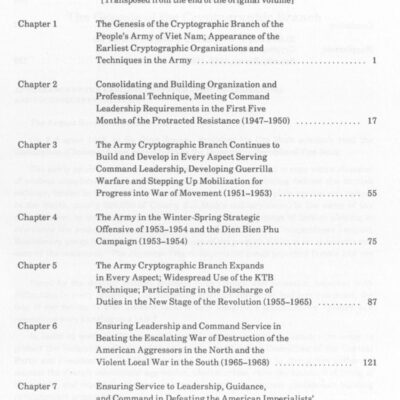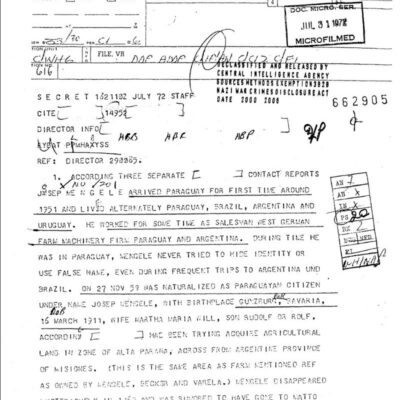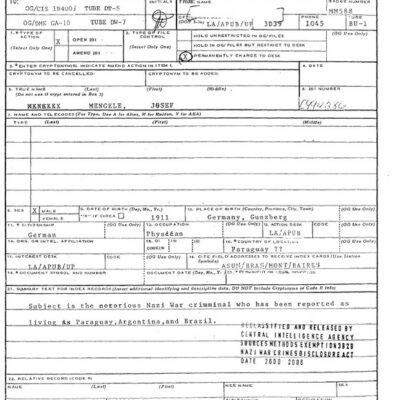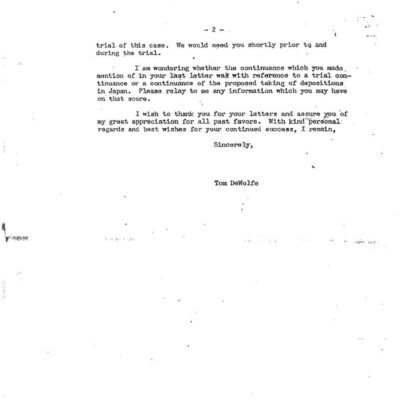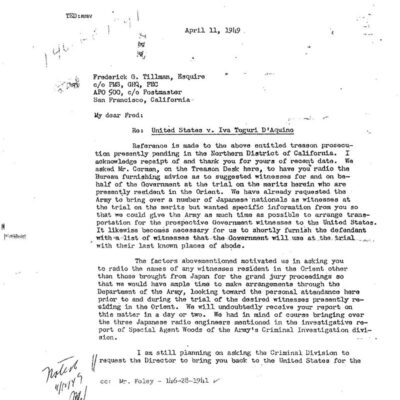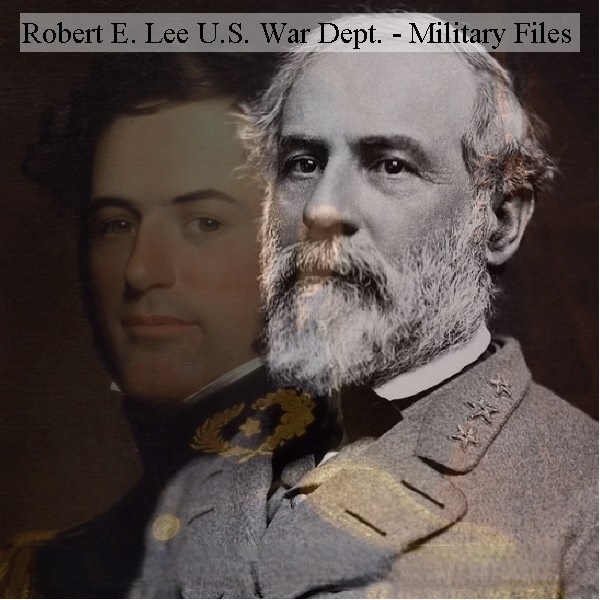
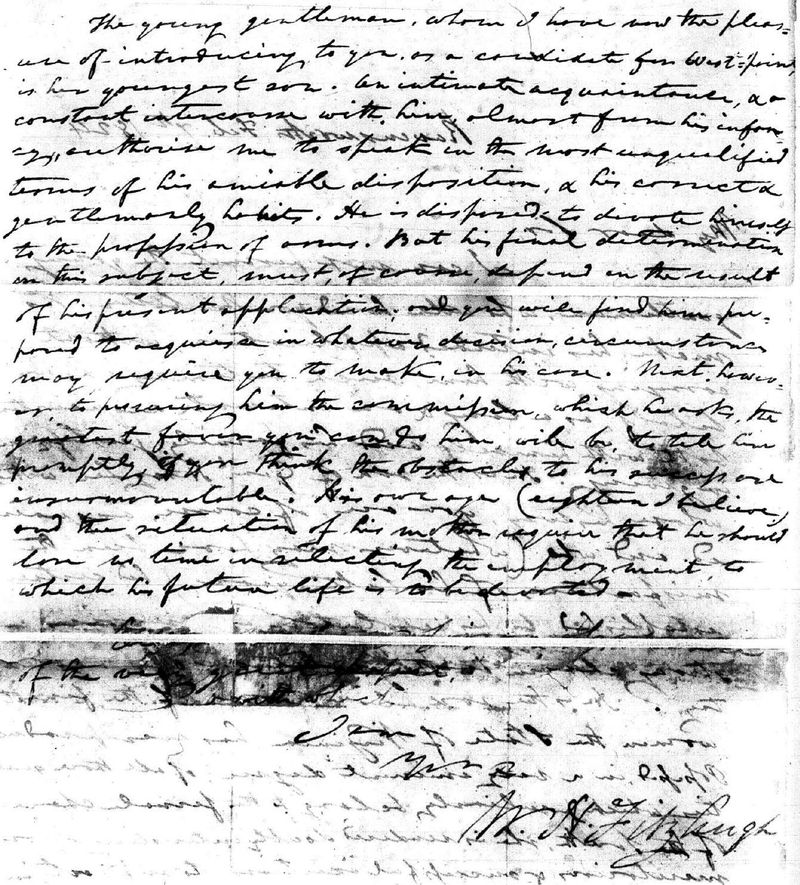
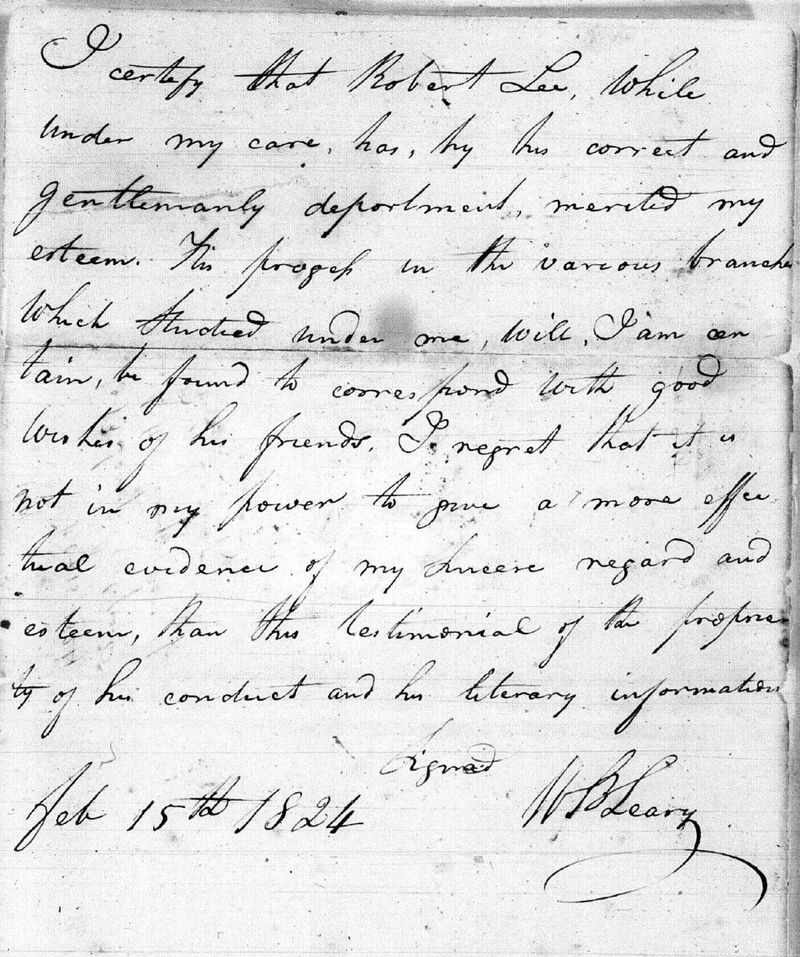

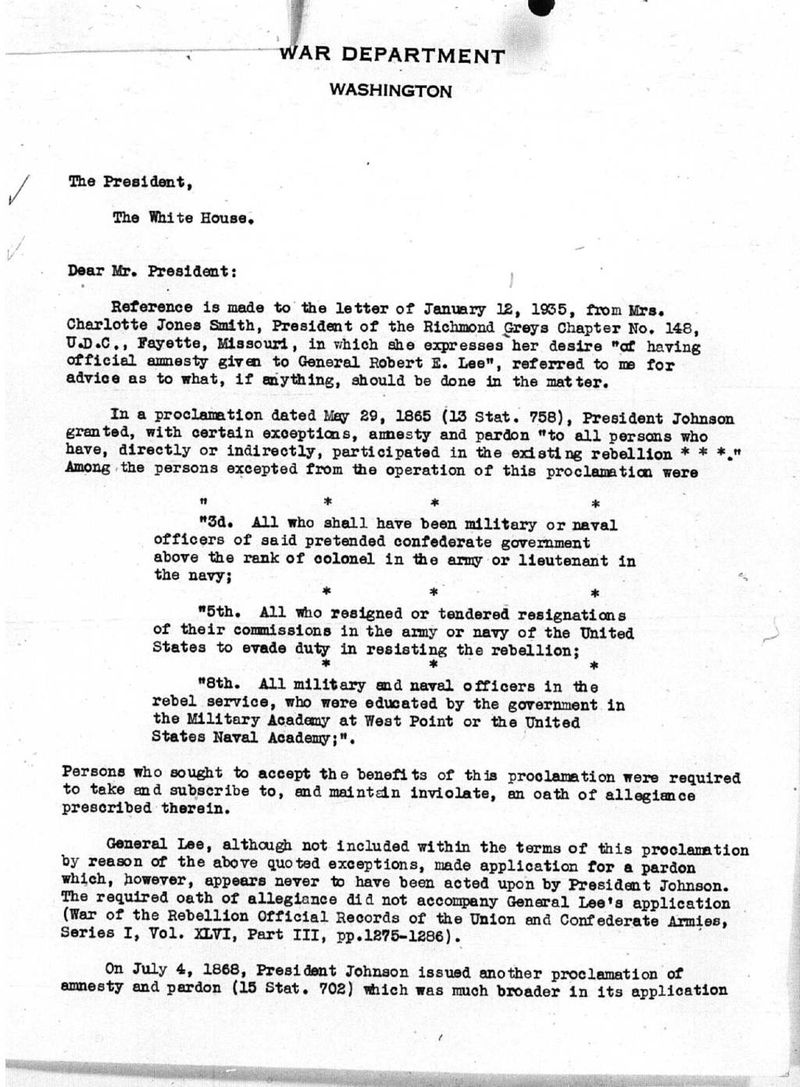
Civil War: Robert E. Lee United States War Department Files
$19.50
Description
Robert E. Lee: A Life in Time
Timeline of Events
- January 19, 1807: Robert E. Lee is born in Stratford, Westmoreland County, Virginia.
- July 1, 1825: Robert E. Lee is appointed to the United States Military Academy at West Point.
- July 1, 1829: Lee graduates second in his class from West Point and is brevetted a second lieutenant in the Corps of Engineers.
- 1829-1846: Lee serves in various engineering roles, including work on forts and rivers. He serves as assistant astronomer for establishing the boundary between the states of Ohio and Michigan, 1835.
- 1846-1848: Lee serves with distinction in the Mexican-American War, earning multiple brevets for “gallant and meritorious conduct”.
- 1846: Chief Engineer of the column commanded by Brig. Gen. John E. Wool during the march toward Chihuahua.
- March 9-29, 1847: Siege of Vera Cruz.
- April 17-18, 1847: Battle of Cerro Gordo, where he earns a brevet major.
- August 19-20, 1847: Battle of Contreras, earning a brevet lieutenant colonel.
- August 20, 1847: Battle of Churubusco.
- September 13, 1847: Battle of Chapultepec, where he earns a brevet colonel and is wounded.
- September 13-14, 1847: Assault and capture of Mexico City.
- 1848-1852: Lee serves as superintending engineer of the construction of Fort Carroll, Patapsco River, MD.
- September 1, 1852 – March 31, 1855: Lee serves as Superintendent of the United States Military Academy.
- 1855-1860: Lee serves in various posts, including frontier duty in Texas and an expedition against the Comanche Indians.
- October 17-25, 1859: Lee commands the force that suppresses John Brown’s raid at Harper’s Ferry.
- February 6-December 12, 1860: Commander of the Department of Texas.
- April 20, 1861: Lee resigns his commission in the U.S. Army.
- April 23, 1861: Lee accepts command of the armed forces of Virginia.
- August 31, 1861: Lee is promoted to full general in the Confederate Army.
- June 25 – July 1, 1862: Seven Days Battles, near Richmond, Virginia. Lee’s army defeats a Union offensive against Richmond. J.E.B. Stuart’s cavalry plays a role in the campaign.
- August 28–30, 1862: Battle of Second Manassas (also known as Second Bull Run). Lee’s army achieves a tactical success.
- September 1862: Maryland Campaign.
- Lee leads his army into Maryland to secure supplies and gain support for the Confederacy.
- Special Order No. 191: Lee’s army is divided, and a copy of the order is lost and discovered by Union forces.
- Battle of Antietam: A costly battle for both sides resulting in a tactical draw but a strategic victory for the Union after which the Emancipation Proclamation was issued.
- December 1862: Battle of Fredericksburg. Lee’s defensive strategy wins a tactical victory.
- December 1862-July 1863: Vicksburg Campaign.
- May 4 – June 15, 1864: The Overland Campaign in Virginia. Grant and Lee engage in a series of battles.
- September 18-20, 1863: Battle of Chickamauga.
- 1863: Lee proposes an offensive concentration in Virginia for a campaign in Pennsylvania (Gettysburg).
- April 9, 1865: Lee surrenders to Lt. Gen. Ulysses S. Grant at Appomattox Courthouse, Virginia.
- Post-War: Robert E. Lee’s Arlington home and personal property are confiscated by the United States government
- Post-War: Lee accepts the presidency of Washington College in Lexington, Virginia, and it is renamed Washington and Lee University after his death.
- October 12, 1870: Robert E. Lee dies in Lexington, Virginia.
- 1915: “Lee’s Dispatches,” a collection of Robert E. Lee’s letters to Confederate President Jefferson Davis, is published by Douglas Freeman.
- 1991-2008: U.S. Army service members complete military theses on Robert E. Lee at U.S. Army Command and General Staff College.
Cast of Characters
- Robert E. Lee: Born January 19, 1807, in Virginia, and died October 12, 1870. Graduated from West Point in 1829. Distinguished U.S. Army officer, especially in the Mexican-American War. Resigned from U.S. Army to command Confederate forces. Commander of the Army of Northern Virginia during the Civil War and key figure in the Confederacy. Surrendered to Ulysses S. Grant at Appomattox Courthouse.
- Ulysses S. Grant: Lieutenant General and General-in-Chief of all Union armies. Lee’s main opponent in the later stages of the Civil War, eventually defeating him at Appomattox.
- Jefferson Davis: President of the Confederate States of America. Lee corresponded with Davis on war matters.
- Thomas “Stonewall” Jackson: Confederate General. Served under Lee and was a key commander.
- James Longstreet: Confederate General under Lee’s command.
- J.E.B. Stuart: Confederate cavalry commander, known for his raids and reconnaissance.
- John Pope: Union General who commanded the Army of Virginia and was defeated by Lee at Second Manassas.
- George McClellan: Union General who commanded the Army of the Potomac. Found Lee’s lost orders.
- Henry W. Halleck: Union General and General-in-Chief during part of the Civil War.
- John E. Wool: U.S. Army Brigadier General who commanded the column Lee served with in the Mexican-American War
- John Brown: Abolitionist who raided Harper’s Ferry. Lee commanded the force that suppressed the raid.
- Douglas Freeman: Writer who published “Lee’s Dispatches” in 1915, a key primary source for Civil War historians.
- P.G.T. Beauregard: Confederate General who suggested a strategic concentration of forces on the Tennessee theater.
- Edwin Alexander: A general in the Confederacy
- John Pemberton: A Confederate general who served in the Confederate Army.
- H. Norman Schwarzkopf: A U.S. Army General, whose tactics in Desert Storm are compared with those of Lee during the Seven Days’ Battles.
- Helmuth von Moltke the Elder: Prussian general who developed the staff ride.
- Eben Swift: U.S. Army Major who took officers from Fort Leavenworth on the Army’s first staff ride to the Chickamauga Battlefield.
Civil War: Robert E. Lee United States War Department Files
A total of 3,410 pages of documents from the War Department and the Department of Defense related to General Robert E. Lee.
WAR DEPARTMENT FILES
This section contains 650 pages of chosen files from the War Department. The documents include correspondence received by the Adjutant General’s Office, starting with Lee’s application for West Point in 1824 and ending with his resignation in 1861. It also features Lee’s compiled military service record from 1861 to 1865. Included are General Robert E. Lee’s letters to Lt. Gen. Ulysses S. Grant concerning the conditions of surrender, dated April 7-9, 1865. Additionally, there is the honor parole signed by Gen. Lee and his staff on April 9, 1865. Furthermore, it includes Lee’s 201 file from the Old Records Division of the Adjutant General’s Office, which has documentation extending up to 1948.
THE “LOST ORDER” SPECIAL ORDER 191 This collection contains papers related to Special Order 191. After achieving tactical success at the Second Bull Run from August 28 to 30, 1862 (Battle of Second Manassas), General Lee moved his Army of Northern Virginia into western Maryland to procure supplies and attempt to win support for the Confederate cause among the local population. Under Special Order No. 191, Lee split his forces during the Maryland Campaign, which created an opening that Union general George McClellan capitalized on after a lost copy of Lee’s orders was discovered by a Union private. Although McClellan claimed he would set a trap, he acted too cautiously to fully leverage the intelligence, allowing Lee to consolidate his troops. What could have turned into a significant Union victory ended with the Union simply maintaining control of the battlefield at Antietam after the war’s most lethal single day of fighting. This collection contains the copy of the lost order. It also includes another version of the order that was not lost, which General Thomas “Stonewall” Jackson hand-copied and sent to General D. H. Hill. Additionally, this collection has a ledger copy of a telegram from Major General George McClellan to General Major Henry W. Halleck regarding General Robert E. Lee’s Special Order No. 191.
ROBERT E. LEE CONFISCATION CASE
This collection features documents from the Confiscation Case File related to the seizure of Robert E. Lee’s Arlington residence and his personal belongings at Arlington House. The files referenced originate from several record groups at the National Archives and Records Administration, which include: the Records of the Adjutant General’s Office from the 1780s to 1917 (Record Group 94); Records of the Office of the Chief of Engineers (RG 77); the War Department Collection of Confederate Records (RG 109); and the Records of the Adjutant General’s Office from 1917 onward (RG 407).
ADDITIONAL MATERIAL
General Robert E. Lee’s communications to Confederate President Jefferson Davis
The book “Lee’s Dispatches: Unpublished Letters General Robert E. Lee, C.S.A. to Jefferson Davis and the War Department of The Confederate States of America 1862-1865,” contains transcriptions of General Robert E. Lee’s messages to President Jefferson Davis, sourced from Wymberley Jones De Renne’s private collection in Wormsloe, Georgia.
This comprehensive 482-page volume includes 204 transcribed dispatches authored by Robert E. Lee.
In 1911, writer Douglas Freeman discovered a stash of previously lost wartime correspondence between Robert E. Lee and Confederate president Jefferson Davis. After dedicating four years to studying these documents, he released “Lee’s Dispatches” in 1915. The book was warmly welcomed by Civil War historians and became a vital primary source for those studying the conflict. Composed between June 2, 1862, and April 1, 1865, Lee’s letters to Davis provided clearer insights into the general’s military strategies, his decision-making processes, and highlighted his relationship with Davis. In his introduction, Freeman outlined seven significant insights derived from the letters. One such insight indicates that the Confederate leadership in 1862 contemplated but ultimately dismissed an ambitious plan to bolster Stonewall Jackson’s forces in the Shenandoah Valley and launch an aggressive campaign against the North, even at the risk of leaving Richmond vulnerable.
STAFF RIDE GUIDES/HANDBOOKS
There are 1,090 pages of staff ride guides and handbooks related to Civil War battles that involved Robert E. Lee. A staff ride is an educational method utilized in military training and professional development. This technique was created by Prussian General Helmuth von Moltke the Elder in the early 1800s. In 1906, Major Eben Swift led the first staff ride for the Army to the Chickamauga Battlefield with twelve officer-students from Fort Leavenworth’s General Service and Staff School. Since then, staff rides have been integrated into the training of Army officers to bridge the gap between training during peacetime and actual warfare. The practice was reinstituted at the Command and General Staff College in the early 1980s.
Staff rides consist of studying battlefields in person. Decisions made during the battle and possible alternatives are analyzed on-site. Students actively participate, often taking on roles from the battle, and are interrogated about the events, decisions made, and whether different choices could have been made.
The U.S. Army Center of Military History has been appointed as the organizer of the Army’s staff ride program. This collection features various guides created by the U.S. Army Center of Military History, including:
- Chancellorsville Staff Ride Briefing Book
- Gettysburg Staff Ride Briefing Book
- Staff Ride Handbook for the Vicksburg Campaign, December 1862-July 1863
- Staff Ride Handbook for the Battle of Chickamauga, September 18-20, 1863
- Staff Ride Handbook for the Overland Campaign in Virginia, May 4 to June 15, 1864: A Study in Operational-Level Command
UNITED STATES MILITARY SCHOLARLY RESEARCH ON ROBERT E. LEE A collection of monographs spanning 1,090 pages, authored by historians who are U.S. service members. These theses were completed and approved by the Thesis Committee of the U.S. Army Command and General Staff College from 1991 to 2008. They were produced by Majors pursuing a Master’s Degree in Military Art and Science at the U.S. Army Command and General Staff College located in Fort Leavenworth, Kansas, which serves as a graduate institution for the United States Army.
The studies encompass:
Lee Builds an Army: from Malvern Hill to Second Manassas. Abstract: In his initial campaign as the newly appointed leader of the Army of Northern Virginia, Robert E. Lee halted the Union’s advance on Richmond during a series of battles known as the Seven Days. While ultimately successful, the Confederate maneuvers were often awkward and inconsistent, frequently overlooking chances for greater victories. Following the conclusion of the Seven Days, Lee reorganized his troops and began preparing for his next campaign. This subsequent effort led to the Battle of Second Manassas just two months later and is widely regarded as one of Lee’s most exceptional strategies. The aim of this study is to pinpoint the changes and enhancements within Lee’s army that allowed for significant improvement in such a brief period.
The study employs LTC James Dubik’s campaign analysis framework, which is an adaptation of the traditional “ends, ways, and means” approach to campaign planning. It assesses four elements of a campaign: intellectual, cybernetic, psychological-physical, and harmonic, as a method for comparative evaluation. Despite his lack of experience, Lee demonstrated an ability to learn from his first campaign. He recognized what actions were necessary and possessed the capability to implement them. Each modification he made was crucial but not individually decisive. It was the combination of these changes along with enhanced operational planning that effectively transformed Lee’s forces into the renowned Army of Northern Virginia.
Critical Analysis of Lee’s Defense at Fredericksburg – 1862: A Tactical Victory or an Opportunity for Operational Success Lost. Abstract: This article explores a specific aspect of operational warfare, focusing on defense, and seeks to highlight how the components of planning, preparation, and execution used in the Active Defense approach need to be adjusted with the integration of our Air-Land Battle doctrine that emphasizes operational strategies.
Loyalty and the Army: A Study of Why Civil War Generals Robert Lee, John Pemberton, Thomas Jackson, and Edwin Alexander Joined the Confederacy
Abstract: This research looks into the idea of loyalty within the context of the U.S. Army. Considering that the term has been excluded from the official definition of Army Ethos in the 1994 FM 100-1, this study examines its historical significance. The American Civil War is identified as the sole relevant conflict where loyalty issues were prevalent among the U.S. Army.
Comparison of Initiative during the 1864 Virginia Overland Campaign
This analysis scrutinizes the contrasting initiatives shown by Generals Ulysses S. Grant and Robert E. Lee throughout Grant’s 1864 campaign in Virginia. It starts with President Lincoln’s appointment of Grant as Lieutenant General and leader of all Union forces on March 9, 1864, and ends with the unsuccessful assault led by Grant on June 18 at Petersburg, Virginia. The intentions behind Grant and Lee’s campaigns are assessed, their resources compared, and their military actions described and analyzed, leading to the conclusion that Lee exhibited more initiative than Grant. Lee showed greater initiative during the campaign by compelling Grant to change his plans and engage fortified defensive positions, while also retaining the final initiative. Each of Grant’s attempts to flank was an effort to seize the initiative, ultimately aimed at undermining Lee’s army.
The Seven Days, June 25 – July 1, 1862. Thesis Statement: General Robert E. Lee’s strategy during the civil War at the Seven Days’ Battle led to a swift and decisive victory; similarly, General H. Norman Schwarzkopf’s analogous tactical approach for ground operations during Desert Storm resulted in success. Discussion: An analysis of Lee’s tactics in the Seven Days’ Battle showed many parallels with Schwarzkopf’s ground strategies in Desert Storm.
Both generals faced enemies that outnumbered them nearly two to one; thus, they could not rely on sheer numbers to win. Instead, they needed to formulate a superior strategy to outsmart and outmaneuver their opponents, catching them off guard. Conclusion: Despite being separated by more than a century, Lee and Schwarzkopf exhibited comparable ideas, strategies, and battle plans. Even when heavily outnumbered, both commanders outwitted their adversaries with bold and clever plans, showcasing their tactical brilliance in ground operations. Both achieved victory, and their legacies serve as lessons for future Army leaders seeking success on future battlefields.
Confederate King of Battle: This thesis examines the field artillery corps of the Army of Northern Virginia in comparison to that of the Army of Tennessee. The goal is to assess which corps was more effective in combat and the reasons behind its effectiveness.
Opportunities Gained and Lost: This topic focuses on J. E. B. Stuart’s cavalry operations throughout the Seven Days Campaign. This research analyzes the operations of Confederate cavalry from June 12 to July 3, 1862, which were integral to the “Seven Days Campaign.” General Robert E. Lee’s Seven Days Campaign effectively countered a Union attack targeting Richmond, Virginia, marking a significant shift in the American Civil War. The study aims to identify the key contributions made by General J. E. B. Stuart’s cavalry brigade towards this Confederate success and to evaluate the advantages and limitations of his specific tactics for mounted troops.
From June 12 to June 15, 1862, Stuart conducted an armed reconnaissance known as the “Chickahominy Raid,” which supplied essential intelligence that contributed to General Lee’s achievements in the campaign and lifted the declining morale among Confederate forces. This operation was the first of Stuart’s famed raids, establishing a tactical approach that was later emulated by other Confederate cavalry leaders and Union cavalry units alike. Although Stuart sought to operate independently during the Seven Days Campaign, his efforts were poorly coordinated with Lee’s army, leading to missed chances for making a more impactful contribution in the conflicts near Richmond.
Confederate Strategy in 1863: Was Strategic Concentration Achievable? Abstract: The U.S. Army focused on a cordon defense strategy. Jefferson Davis, having understood this from his tenure as the U.S. Secretary of War, sought to apply a cordon defense when he took office as President of the Confederacy. Other strategists within the Confederacy favored a Jominian approach to concentration. One of the earliest proponents was P. G. T. Beauregard, who recommended focusing on the Tennessee theater. In response to the challenges of 1862, the Confederacy executed somewhat effective strategic concentrations in Mississippi and Virginia.
Throughout the conflict, Davis countered initiatives for offensive concentrations with proposals for defensive consolidation to strengthen vulnerable areas. In the spring of 1863, Robert E. Lee proposed a significant offensive concentration in Virginia aimed at a campaign in Pennsylvania, which he believed could determine the war’s outcome. While Davis agreed with Lee’s campaign concepts, he failed to provide sufficient support. Prior to the campaign, the Confederacy had troops ready. The monograph assesses concentrations using five criteria: distance, time, combat power, leadership, and purpose. These criteria are employed to analyze the Confederate strategic landscape in 1863 and derive insights applicable to contemporary concentrations.
Information and Structure – A Case Study: The Second Battle of Manassas. Abstract: This paper examines how the structure of an army influences its information processing capabilities and success in combat. It addresses several key questions: What constitutes information and what is its connection to organizations? In what ways does organizational structure either promote or hinder information flow? How does the arrangement of an organization impact a senior leader’s decision-making ability? These topics are analyzed through the lens of the Second Manassas campaign during the American Civil War. The relationship between organizational structure and information flow is specifically investigated in relation to the Second Manassas battle.
In August 1862, General John Pope’s Army of Virginia faced off against General Robert E. Lee’s Army of Northern Virginia in Western Virginia. Both armies utilized a similar hierarchical framework; however, their cavalry organization differed significantly. In Lee’s forces, Major General Jeb Stuart led a centralized cavalry unit that reported directly to Lee. Conversely, in Pope’s army, the cavalry units were under the command of three different corps leaders, resulting in Pope lacking direct control over his cavalry. Pope’s experiences during the Battle of Second Manassas illustrate that organizational structure can influence information flow. He often missed crucial information and received updates hours late on multiple occasions. In contrast, Lee maintained direct oversight of his cavalry, eliminating any intermediaries that could impede communication. This allowed Lee to have an accurate understanding of the battlefield situation and, at a critical juncture, he effectively deployed Longstreet’s forces to attack the Union flank, securing victory.
Marching with General Lee: A study of the Maryland Campaign of 1862. Abstract: This study examines the Confederate Maryland campaign of 1862 through several important military theory concepts. As a complex operation involving prolonged efforts and numerous battles, this campaign serves as a valuable case study that emphasizes the relevance of classical military theory in planning operations. The monograph starts by creating a theoretical framework to evaluate the Confederate actions. Following this, a historical analysis of the strategic context, campaign strategy, and its execution exposes the brutal truths of warfare.
It concludes that Lee’s campaign in Maryland failed due to shortcomings at the operational level of warfare. Although the Confederate plan aimed to gain foreign acknowledgment, liberate Maryland, and impact the upcoming northern congressional elections was solid, the tactics used by the Army of Northern Virginia were outstanding. Before this campaign, the army achieved a remarkable victory at Second Manassas under the bold leadership of Lee, Jackson, Longstreet, and Stuart. However, during the Maryland campaign, Lee’s forces faced near annihilation at Antietam, primarily due to inadequate operational planning along with unforeseen factors. Throughout this campaign, the South suffered more losses from straggling than at any other time during the war.
The extended marching led the army to reach its breaking point. The decision to capture Harper’s Ferry further weakened the army’s fighting capacity. The campaign that initially aimed to bring an end to the war transformed into a desperate struggle for survival at Antietam. In this context, the campaign exemplifies how weak operational planning can be compensated for by effective tactics. While these tactics prevented total defeat, strategically, the South was compelled to revert to defensive maneuvers in Virginia. The outcomes of this campaign enabled President Lincoln to issue the Emancipation Proclamation, transforming the conflict from a battle for union to a war aimed at freeing the enslaved. Gettysburg Campaign: The Emergence of Operational Art?
Abstract: Numerous books discuss the Gettysburg Campaign, mainly addressing its tactical aspects and the actions of various brigades and regiments. However, what might be more valuable for military professionals is an exploration of how the Confederacy’s strategies and implementation reflect characteristics of what we currently define as operational art.
Operational Operating Systems as a Method of Analysis: An Examination of the 1862 Peninsula Campaign
This paper examines the 1862 Peninsula Campaign.
About Robert E. Lee
Robert E. Lee was the highest-ranking general of the Confederate armies during the Civil War, born on January 19, 1807, in Westmoreland County, Virginia, and passing away on October 12, 1870, in Lexington, Virginia. He entered the United States Military Academy at West Point on July 1, 1825, graduating second in his class. After graduating, he received a commission as a second lieutenant in the Corps of Engineers on July 1, 1829. He steadily advanced through the ranks, particularly due to his “gallant and meritorious conduct” during the Mexican-American War in 1847. His promotions included first lieutenant on September 21, 1836; captain on July 7, 1838; brevet major for his bravery in the Battle of Cerro Gordo, Mexico, on April 18, 1847; brevet lieutenant colonel for his distinguished service in the battles of Contreras and Churubusco, Mexico, on August 20, 1847; brevet colonel for his valor in the Battle of Chapultepec, Mexico, on September 13, 1847; lieutenant colonel of the 2nd Cavalry on March 3, 1855; and colonel of the 1st Cavalry on March 16, 1861. He resigned from his position on April 20, 1861.
His tenure in the U.S. Army involved various roles, including serving as an assistant engineer for the construction of Forts Monroe and Calhoun to safeguard Hampton Roads, VA, between 1829 and 1834; assisting the chief engineer in Washington, DC from 1834 to 1837; and working as an assistant astronomer to delineate the boundary between Ohio and Michigan in 1835. He oversaw engineering projects to improve the harbor of St. Louis, MO, along with the Missouri and Upper Mississippi Rivers from 1837 to 1841; had overall responsibility for enhancements to the Lower Mississippi and the Ohio River south of Louisville, KY from 1840 to 1841; and managed the construction and maintenance of defenses at the Narrows entrance to New York harbor during the periods of 1841-44 and 1844-46. Additionally, he served as a member of the Board of Visitors to the Military Academy in 1844; was an assistant to the chief engineer in Washington, DC in the same year; and participated as a member of the Board of Engineers for Atlantic Coast Defenses from September 8, 1845, until March 13, 1848.
During the Mexican-American War, Lee held the position of chief engineer for the column led by Brig. Gen. John E. Wool while advancing towards Chihuahua in 1846. In 1847, his contributions included participating in the siege of Vera Cruz from March 9 to 29; conducting reconnaissance from April 15 to 17; engaging in the Battle of Cerro Gordo on April 17 and 18; undertaking reconnaissance through the Pedregal on August 18 and 19; fighting in the Battle of Contreras on August 19 and 20; surveying Coyoacan on August 20; participating in the Battle of Churubusco on the same day; involving himself in the Battle of Molino del Rey on September 8; scouting the approaches to Mexico City between September 9 and 13; storming Chapultepec on September 13, where he sustained injuries; and taking part in the assault and capture of Mexico City from September 13 to 14.
He was assigned to a special role in the Engineer Bureau in Washington, DC, in 1848; he worked as the supervising engineer for the construction of Fort Carroll on the Patapsco River from 1848 to 1852; he participated as a member of the Board of Engineers for Atlantic Coast Defenses from July 21, 1848, until April 11, 1853; and he held the position of Superintendent at the United States Military Academy from September 1, 1852, to March 31, 1855. He led operations at Jefferson Barracks in Missouri in 1855; served on frontier duty at Camp Cooper in Texas from 1856 to 1857; took part in the expedition against the Comanche in 1856; and was stationed at San Antonio, Texas, in 1857. He took a leave of absence from 1857 to 1859. After returning to service, he commanded the forces at Harper’s Ferry that quelled John Brown’s raid from October 17 to 25; he led the Department of Texas from February 6 to December 12, 1860; and then went on another leave until he resigned.
On April 23, 1861, Lee took command of Virginia’s armed forces, and on August 31, 1861, he became a full general in the Confederate Army. For almost four years, Robert E. Lee was a key figure in the Confederacy’s military efforts to maintain secession from the United States, but he surrendered to Lt. Gen. Ulysses S. Grant on April 9, 1865, at Appomattox Courthouse, Virginia. Following the war, Lee accepted the presidency of Washington College in Lexington, Virginia; after his death, the institution was renamed Washington and Lee University.


